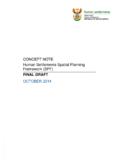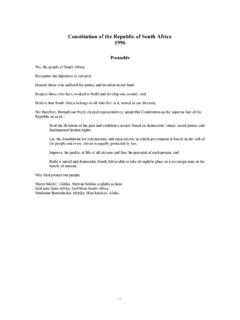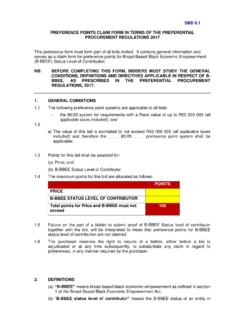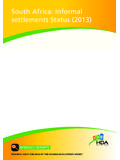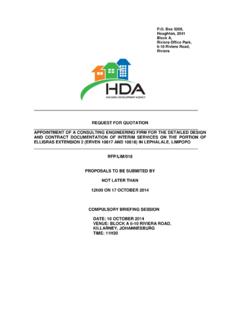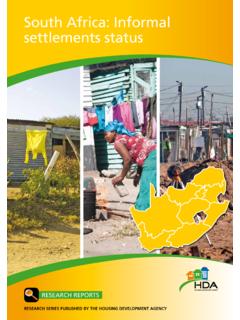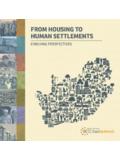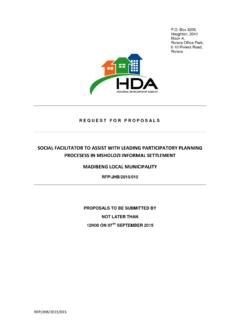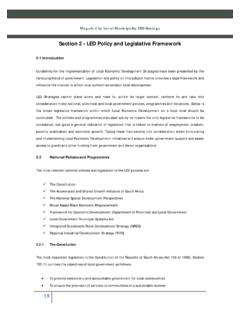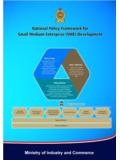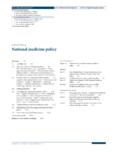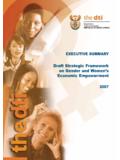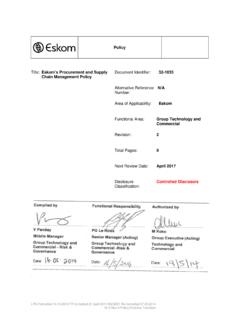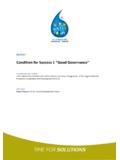Transcription of STAKEHOLDER & INTERGOVERNMENTAL …
1 STAKEHOLDER & INTERGOVERNMENTAL relations (SIR) governance policy [Type the document subtitle] A broad guide to STAKEHOLDER and INTERGOVERNMENTAL relations management and practice in pursuit of the Housing Development Agency s (HDA) strategic and operational objectives. APRIL 2016 1| P a g e o f 12 HOUSING DEVELOPMENT AGENCY STAKEHOLDER AND INTERGOVERNMENTAL relations (SIR) governance policy Background The Constitution of the Republic of South Africa, having constituted government as national, provincial and local spheres went on to state that the three should be seen as distinctive, interdependent and interrelated.
2 It goes on to provide guiding principles and values to INTERGOVERNMENTAL practice as to: Preserve the peace, national unity and the indivisibility of the Republic; Secure the well-being of the people of the Republic; Provide effective, transparent, accountable and coherent government for the Republic as a whole; Be loyal to the Constitution, the Republic and its people; Respect the constitutional status, institutions, powers and functions of government in the other spheres; Not assume any power or function except those conferred on them in terms of the Constitution; Exercise their powers and perform their functions in a manner that does not encroach on the geographical, functional or institutional integrity of government in another sphere; Co-operate with one another in mutual trust and good faith Fostering friendly relations ; Assisting and supporting one another; Informing one another of, and consulting one another on, matters of common interest.
3 Coordinating their actions and legislation with one another; and Adhering to agreed procedures. The INTERGOVERNMENTAL relations Framework Act 13 of 2005, as called for by the Constitution, enriches this constitutional requirement and governance practice. It spells out the strategic objective of the Act and thus the practice as to facilitate co-ordination in the implementation of policy and legislation including: a) coherent government; b) effective provision of services; c) monitoring implementation of policy and legislation; and d) realization of national priorities.
4 2| P a g e o f 12 King III, currently being reviewed as King IV, broadly emphasises the STAKEHOLDER model of governance ; meaning consideration not only of shareholders but also the legitimate expectations and interests of its other stakeholders. This has to be done as guided by the pursuit of the triple bottom-line namely This has to be done as guided by the pursuit of the triple bottom-line (or otherwise noted as TBL or 3BL) concerned with three parts: social, environmental (or ecological) and financial impacts. This it calls for through: 1.
5 Taking account of legitimate interests of its stakeholders in its decision making, 2. Proactively managing relations with its stakeholders, 3. Identifying mechanisms and processes that will promote enhanced levels of constructive STAKEHOLDER engagement, 4. Striving to achieve the correct balance between its various STAKEHOLDER groupings, in order to advance the interests of the company, 5. Ensuring the equitable treatment of shareholders, 6. Transparent and effective communication towards building and maintaining relationships, 7. Promoting mutual respect between the company and its stakeholders, 8.
6 Establishing formal process to resolving internal and external disputes, 9. Ensuring that disputes are resolved as effectively, efficiently and expeditiously as possible, and 10. Selecting the appropriate individuals to represent the organization in alternative dispute resolution (ADR) processes. King III goes on to recommend the AccountAbility standard AA1000 STAKEHOLDER Engagement Standard (SES) 2015, amongst others. AccountAbility is a leading global research, consulting and standards organisation providing innovative solutions to the most critical challenges in corporate responsibility and sustainable development.
7 Since 1995, AccountAbility has been helping corporations, non-profits and governments embed ethical, environmental, social and governance accountability into their organisational DNA. At the core of the AA standard series and SES 2015 in particular, is the upholding of the accountability principles of Inclusivity, Materiality and Responsiveness. The adoption of this standard can be a source of competitive advantage for the HDA, a measure that can effectively create value and improve overall performance - collaboratively. 3| P a g e o f 12 Introduction The National Department of Human Settlements decided on establishing the Housing Development Agency (HDA), resulting from a 10 year review of government s housing performance process having noted amongst others that: a) a significant factor in the lack of adequate delivery of housing to low-income earners has been the delay in the identification, acquisition, assembly and release of well-located state-owned and private land.
8 B) that there are serious challenges that hinder the realization of housing for all, that there is a need to accelerate the delivery of housing, to enhance and secure the required skills; c) that there is an urgent need for government to address the increasing backlog in respect of housing delivery together with a critical shortage of skills and capacity to provide housing in some provinces and municipalities; d) that in terms of Schedule 4 of the Constitution housing is a functional area of concurrent national and provincial legislative competence.
9 The HDA Act of 2008 clearly stipulates the strategic objectives for which the agency was established as to: 1) identify, acquire, hold, develop and release state, communal and privately owned land for residential and community purposes and for the creation of sustainable human settlements; 2) project manage housing development services for the purposes of the creation of sustainable human settlements; 3) ensure and monitor that there is centrally coordinated planning and budgeting of all infrastructure required for housing development; 4) monitor the provision of all infrastructure required for housing development.
10 Section 5(4) of the HDA Act acknowledges that even as the agency pursues its mandate, Nothing in this Act detracts from the power of a province and municipality to identify, acquire, hold, develop and release land for residential or community development without recourse to the Agency, in terms of their functions under the Housing Act . To this end, Section 7(f) says that the agency MUST ensure that there is collaboration and INTERGOVERNMENTAL and integrated alignment for housing development services . It is thus of a high priority for the HDA, that all stakeholders have confidence in its work noting its supportive role to constitutional structures or spheres of government.
